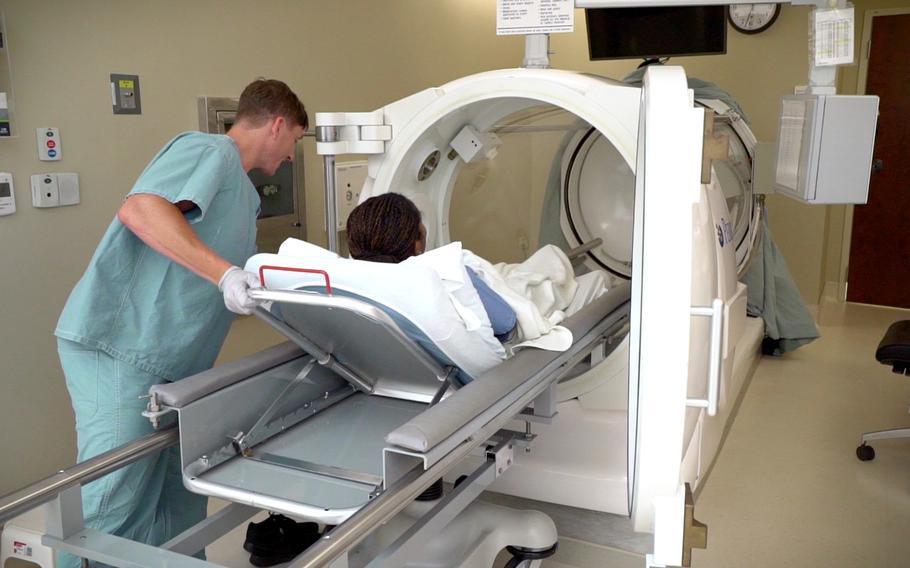Opinion
Hyperbaric oxygen therapy can help veteran mental health
Special to Stars and Stripes December 5, 2024

Hyperbaric oxygen, as shown here at the Brooke Army Medical Center at Fort Sam Houston, Texas, is an intervention in which an individual breathes nearly 100% oxygen while inside a hyperbaric chamber that is pressurized to greater than sea level pressure. (James Camillocci/U.S. Army)
Tragically, America loses 17 or more veterans to suicide each day. This heartbreaking statistic is emblematic of the struggle that our armed forces face upon return to civilian life. According to the Department of Veterans Affairs, at least 7% of American veterans will experience post-traumatic stress disorder. Further, for those who served in missions to Iraq and Afghanistan, the rate is three to four times higher. This disorder is a silent killer and is a direct result of the body’s response to traumatic experiences and brain injuries. It is far more prevalent among veterans than most realize.
For many veterans battling the unforeseen mental hardships derived from harrowing active-duty experiences, hope may ultimately vanish when all care options have run out. Given the lack of progress in curbing veteran suicide, as members of the House Veterans’ Affairs Committee, we will not tolerate the bureaucratic hurdles that stand in the way of lifesaving treatments for those who see no pathway forward.
In an effort to explore new options for treatment, we recently hosted a roundtable with lawmakers, VA personnel, and advocates to engage experts and veterans in discussing emerging therapies. We actively support robust research into any modality that has the potential save lives and are particularly excited about hyperbaric oxygen therapy (HBOT), which has a remarkable track record of success across numerous well-constructed studies.
In North Carolina, the state’s budget for 2024 included $21.1 million for HBOT, an expansion of treatment by 630 patients each year. This Congress, we’ve partnered on bipartisan legislation, the Veterans National Traumatic Brain Injury Treatment Act, to establish care at the federal level through a pilot program at the VA to furnish HBOT for veterans who have PTSD or a traumatic brain injury. The sole source of funding will be donations, not taxpayer dollars, received by the secretary of the VA.
HBOT has been proven to accelerate the brain’s healing process through various mechanisms by providing the bloodstream with elevated oxygen to reach and repair damaged tissue and restore normal function. Patients spend 60-90 minutes in a chamber where they receive 100% medical-grade oxygen at up to twice the normal atmospheric pressure. A full treatment protocol may differ from patient to patient, but it is ultimately very safe, non-invasive and accessible.
Our nation’s veterans, service members, and their families, who sacrifice so much to protect our freedoms and prosperity, are owed the medical solutions that can be make them whole again. We must continue to make strides in bringing awareness to the mental health crisis impacting our nation’s veterans, and more importantly, deliver hope to those walking through darkness. While hyperbaric oxygen therapy may not be a cure for everyone, it offers a crucial and reliable lifeline for many veterans who have exhausted all other options.
Rep. Greg Murphy, a Republican, represents North Carolina’s 3rd Congressional District and is the only practicing physician in Congress. Rep. Derrick Van Orden, a Republican, represents Wisconsin’s 3rd Congressional District and is a retired Navy SEAL.